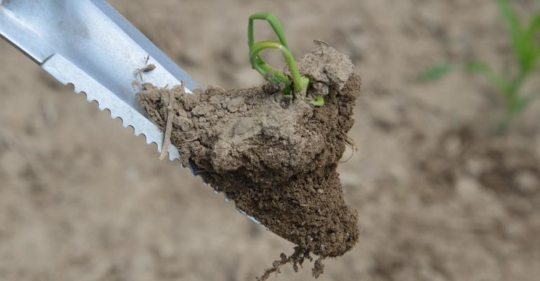Explore our blog featuring articles about farming and irrigation tips and tricks!
How Can You Reduce Soil Compaction In 2020?

By: Dave Nanda
Fall 2018 and spring and fall of 2019 were very hard on soils, causing lots of soil compaction. I saw cornfields during July and August that showed the effects of soil compaction created during the spring. It is one of the most important factors that can affect soil health and reduce yields. If your goal is to raise yields, reducing compaction is critical.
You need to diagnose the reasons for compaction on a field-by-field basis before corrective measures can be taken.
Surface soil compaction
Surface compaction can occur from the impact of raindrops or from excessive rains and ponding. If soil is left bare and exposed to hard rains, the impact of water breaks down larger soil aggregates, and the granular structure of soil on the surface is degraded.
Surface compaction can affect water infiltration into the soil and interfere with germination and emergence. If seedlings cannot break through the crust, it can lead to reduction in plant populations and yield. For short-term solutions, the crust may be broken by light disking or other tillage to help emergence.
To prevent crusting, leave a protective layer of crop residue on the surface, or grow cover crops and use minimum- or reduced-tillage practices. Residue helps absorb the impact of raindrops before they can hit the soil structure.
Stay up to date on all T-L news and get alerts on special pricing!


